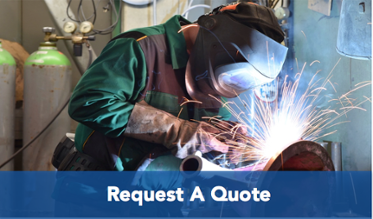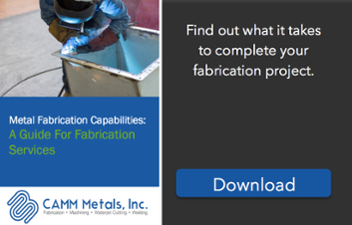 Finishing is the final step in preparing metal products for use, a crucial component for any metal fabrication project. Finishing helps to make products more resistant to corrosion, while providing higher electrical, chemical or tarnish resistance.
Finishing is the final step in preparing metal products for use, a crucial component for any metal fabrication project. Finishing helps to make products more resistant to corrosion, while providing higher electrical, chemical or tarnish resistance.
Beyond that, finishing adds additional durability and makes metal surfaces look their best. For most projects, a product’s finish is determined by its intended use. This post will provide a brief overview of the different types of metal finishing, while offering several factors to consider when choosing a finishing method.
Tips to Choose a Metal Finish
Metal finishing encompasses more than one process, so it can be executed in multiple ways. Sorting through the various metal finishing options can also be confusing-- this is why we have assembled an overview of some of the more commonly applied metal finishing processes, so you can choose the ones that make the most sense for your company.When you’re working on the plan for your next metal fabrication project, consider the following factors when you’re selecting a finishing option:
- Which process aligns best with how you intend your product to be used
- Does the technique you’re leaning towards provide the production speed you require for the project?
- Is the finishing method considered to be cost-effective for your project?
- Is the finishing method suitable for your project’s materials?
Types of Metal Finishing
Powder Coating: Powder coating is mostly a decorative option, often regarded to be more durable than paint. Technicians melt dry plastic powder and apply it to surfaces in a variety of colors and textures. Powder coating produces a covering that is twice as thick as paint. It’s more flexible and can easily bend and yield to the material it’s applied to, making it ideal for products that move frequently. Powder coating also stands up better to chipping. However, powder coating is not easily touched up the way that paint is. It can also be difficult to match powder coating correctly with metallic paint colors. We wrote about powder coating in the past, in this blog post.
Metal Plating: Plating is a manufacturing process in which a a thin layer of metal is applied to coat substrate. This technique results in several benefits: improved corrosion resistance, enhanced strength, enhanced paint adhesion, and decorative appeal. Metal workers use machines to apply a thin layer of materials like copper, nickel, chromium or aluminum.
Anodizing: Anodizing is often used to convert the surface of an aluminum object to aluminum oxide. Anodizing can also deposit a thin, protective film on other nonferrous standard metals. By altering the molecular composition of the surface, anodizing can provide important benefits like improved corrosion resistance, reduced impact of normal wear and tear, and a stronger, harder finish. Typically, an anodized finish is naturally without color; however, dyes in various colors can be added for applications requiring aesthetic appeal.
Galvanizing: Galvanized metals are coated with a protective layer of zinc. Products are dipped into a molten zinc bath to coat them. Galvanizing is best suited for steel products, as the molten zinc reacts with the steel, forming a protective seal on the metal. Surprisingly, galvanizing costs less than many of the other finishing methods and it offers long life expectancy. One major benefit of galvanizing metal is that if it becomes damaged, the rest of the area remains protected so small damages don’t need touch ups.
Galvanizing is a quick process. The coating only requires one dip and the project is protected. Other coatings need to be painted or sprayed which takes significantly more time. The drying process is quicker as well, as galvanization only takes one day to set, while other coatings can take much longer. If you want to learn more about galvanizing, check out this blog post.
Sand Blasting: For this process, operators spray sand or other abrasive materials at a high speed to produce a smooth texture. There are varying types of sand blasting based on the degree of cleanliness the project requires.
Abrasive sand blasting offers several unique advantages. For instance, sand blasting offers the advantage of combining surface finishing and cleaning into one process, which can save time and money. Sandblasting works to remove contaminants, producing a smooth, clean finish. Abrasive blasting can also be used as a surface preparation treatment prior to plating, painting or coating. It can even be applied to help alter the shape or increase the surface area of an object.
CAMM Metals | Finishing for Metal Fabrication Projects
Camm Metals provides custom welding and fabrication services— of course, that means that we also take great care in completing the important finishing stage. We produce high-quality custom metal fabrication with on-time delivery, guaranteed to meet all of our customer’s needs. Contact us today to find out more or request a quote below!




